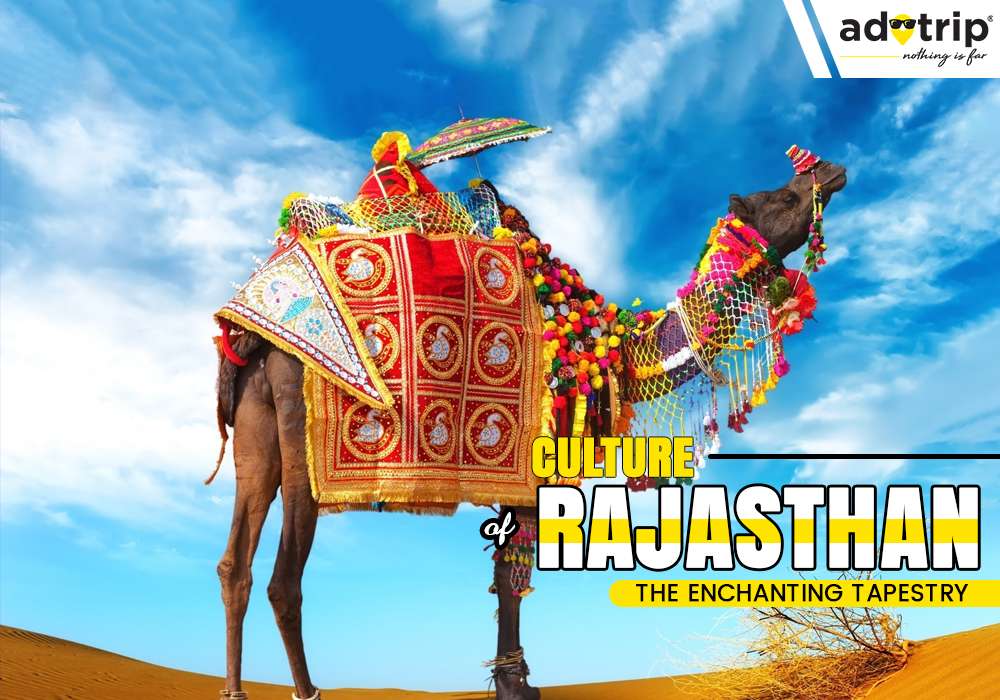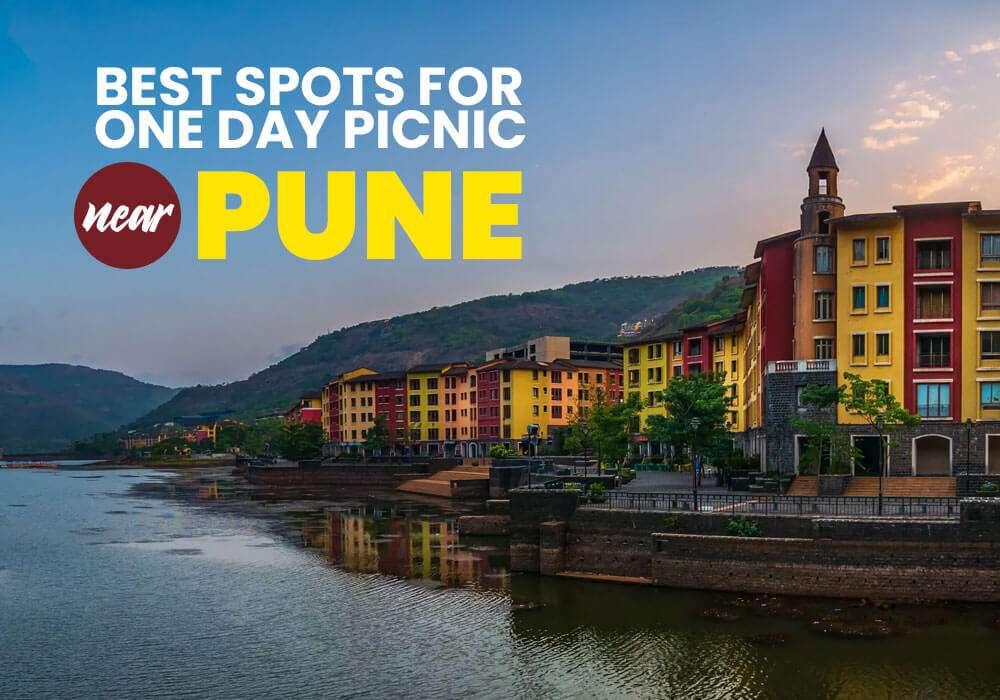
Last Updated At: 10-Jun-2024
Culture of Rajasthan - Traditions, Food, Dance, Music
Rajasthan's history and culture began when this region was the royal residence. Rajasthani culture and heritage have drawn tourists to the stunning state from inside and outside India. Rajasthani culture is characterised by its vibrancy, luxury, and mesmerising beauty. The numerous Rajput monarchs who controlled the region before the British administration gave it the name Rajasthan, which implies "the abode of kings." Rajasthan's unique culture results from centuries of Rajput, Maratha, and Muslim control over the region.
The state is home to a vibrant collection of magnificent structures, vast forts, enchanted palaces, lively folk dances, appealing handicrafts, and some mouthwatering treats exclusive to Rajasthan.
Rajasthan Culture And Tradition
The Rajput and Marathas are the famous kingdoms that have contributed to the state's diverse and historical aspects. The large expanse of the desert, the fort and palaces and the dynamic art form are all defining features of the culture and tradition of Rajasthan.
Here are some of the elements of Rajasthani culture mentioned below:
- Traditional Dress. Timeless & Vibrant Attire
- Music and Dance of Rajasthan. Soulful Melodies
- Festivals of Rajasthan. Celebrations Abound
- Arts and Crafts of Rajasthan. Artistry Beyond Boundaries
- Religion in Rajasthan. Divine Legacy
- The Architecture of Rajasthan. Finest Examples of Architectural Splendour
- Rajasthani Cuisine. The Unique and Flavoursome Dishes
1. Traditional Dress | Timeless & Vibrant Attire
The long, richly decorated skirt called the Ghagra, the blouse called the Choli, and the thin cloth called the Odani which covers the head and shoulders are the different parts of the Rajasthani women’s dress and outfit. On the other hand male costume consists of a Kurta shirt worn over a cotton cloth known as Dhoti draped around the waist.
2. Music and Dance of Rajasthan | Soulful Melodies
Rajasthan has many kings and kingdoms; therefore, it has diverse folk music and Folk dances in Rajasthan from one region to the other. While their respective tastes are related, their processes and strategies are distinct. The esteemed bands Manganiyar and Langa have seen a marked uplift in Rajasthani traditional music.
Also Read About More : The Most Gorgeous Pushkar Fair Rajasthan, India
3. Festivals of Rajasthan | Celebrations Abound
Visitors come from nationwide and beyond to the International Folk Festivals of Rajasthan. At this Jodhpur festival, artists exhibit their beautiful talents. The Summer and Winter festivals at Mount Abu, The Udaipur Mewar Festival, and the Braj Holi festival of Bharatpur are well-known Rajasthani celebrations, including the Raasleela dance, which is famous worldwide.
4. Arts and Crafts of Rajasthan | Artistry Beyond Boundaries
A wide range of carpets, ethnic wear, jewellery, and ornaments originating from Rajasthani artisans are available. Camel leather is the most used material in producing shoes, bags and journals. These carpets are woven in the shape of geometrical shapes and patterns in the Persian hand-knitting style.
5. Religion in Rajasthan | Divine Legacy
Three major religions of Rajasthan are Muslims, Hindus, and Jains. The Lodrakar Jain Temple, the Ranakpur Jain Temple and the Jagdish Temple are few of the popular pilgrimage centres which are abundant in the state.
6. The Architecture of Rajasthan | Finest Examples of Architectural Splendour
Rajasthan's buildings, forts, and other constructions show influences from Islamic, Hindu, colonial, and post-colonial architectural styles. The Ranakpur Jain temple, constructed in the 15th century, showcases Rajasthani architecture's brilliance. Maharaja Jai Singh II erected the Beaux-Arts-inspired Umaid Bhawan Palace in Jodhpur, fusing Western and Indian architectural elements. Rajput monarch Rawal Jaisal constructed the ancient forts of Jaisalmer and Golden in 1156.
7. Rajasthani Cuisine | The Unique and Flavorsome Dishes
Rajasthan culture food and dress attract visitors with regional cuisine, recipes, unique spices, and sweet treats. The well-known Dal Bati dish covers yoghurt, wheat flour, and pulse with ghee. The hot Pyaaz Kachori and the sweet Mawa Kachori may be found at all of the food stands in Rajasthan. Ghewar or Gheriya are two kinds of sweet desserts from Mewar and are found in most restaurants in Rajasthan.
Despite most of the population being vegetarian, Lal Maas and Mohan Maas are two of Rajasthani culture's scrupulous meat recipes. Refreshing and distinctive drinks include masala chai and jaljira. Other prominent cuisines that appeal to foodies include Kadhi, Kalakand, Gatte, Malpua, and Mirchi Vada.
Plan your trip with Adotrip today. Enjoy a wealth of information, end-to-end travel assistance and BOOK Flights, Hotels, and Tour Packages under one roof.
With Adotrip, nothing is far!
Also Read About More : Places To Visit In Rajasthan
Frequently Asked Questions about Rajasthani Culture
Q. What is the Art of Culture in Rajasthan?
A. Rajasthan is known for its unique handicrafts like blue pottery, metalwork, and marble and stone statues. Mirror work, embroidery, bati work, and tie-and-dye are also popular. These make lovely souvenirs for tourists.
Q. What are the Food and Clothing of Rajasthan?
A. The foods of Rajasthan are spicy and some of them are Dal Baati Churma and sweets like Ghevar. Traditional costumes include brightly coloured ghagras for women and turbans and dhotis for the men.
Q. What are some examples of Symbols of Rajasthan’s Culture?
A. The beautiful clothing, ornaments, royal palaces and havelis, and the bright festivals and melas are other facets of the Rajasthani culture.
Q. What is the traditional dance form of Rajasthan?
A. Ghoomar is a folk dance by women and is commonly danced during festivals or other joyous events. Women dance with a cloth over their head and face.
Q. Why is Rajasthan Famous?
A. Rajasthan is well-known for the forts, palaces, and the heritage and arts of the state. The capital of Rajasthan is Jaipur, which is also called the Pink City and is one of the most famous tourist destinations in India that belongs to the Golden Triangle. The state’s slogan is Padharo Mhare Desh which translates to “Welcome to my land”.
--- Published By Adotrip
Latest Blogs

Cash in the Wild: My Safari Adventure Across Kenya with Only...

One Day Picnic Spot Near Pune - Adventure, Trekking and Natu...

One Day Picnic Spots Near Mumbai - Monsoon, Adventure, Beach...

The Best Places to Go in Thailand in 2025












.jpg)



 Dubai
Dubai Malaysia
Malaysia USA
USA





